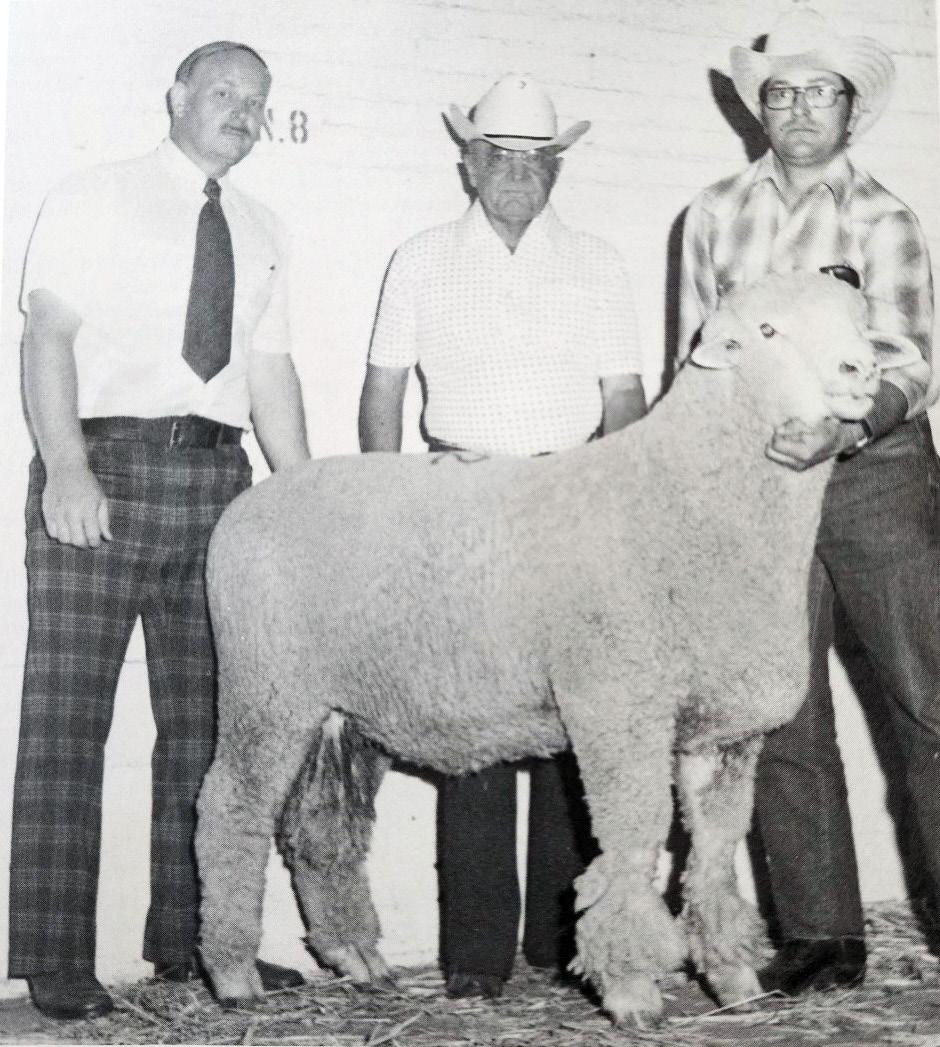
4 minute read
RICHARD L. GERBER 1938 - 2022
The CSBA office was a flurry of activity. Dick handled the business of the CSBA with a pen and paper, a manual typewriter, and a dial telephone for many years. Paperwork was moved using the US Postal Service. Registrations and transfers numbered in the thousands for much of Dick’s tenure. In 1980, registrations soared to over 10,044, transfers totaled 5,305, and there were 160 new memberships. All were handled manually. Dick or Phyllis answered the office phone any time of the day on any day of the week. The Speaking of Columbias magazine was published monthly for decades. Dick typed and manually pieced the pages together, and he worked with a printer in Upper Sandusky. The Gerbers managed the CSBA, virtually, 24-7 during those four decades.
New technology found its way to the CSBA office in the early 1990s. Dick was eager to organize a computerized registration system, digitize the finances, and use a word processor, especially for the SOC. Once the pedigree program was in place, Dick entered thousands of pedigrees that dated back to the 1940s. Today, the CSBA has a complete genetic history of the Columbia sheep because of Dick’s work. At the same time, a word processor replaced the typewriter to print certificates and set up the SOC. In the early 2000s, a CSBA website went live and the breeder’s directory was made available online.
Advertisement
During Dick’s early years, the CSBA held the National Show and Sale and the annual membership meeting at different times and at different locations. For example, in 1968 the annual membership meeting was held June 27-28 in Dubois, Idaho. (The prima- ry discussion was about the pros and cons of artificial insemination and its impact on the sheep industry.) Later in the fall, the National Show and Sale was held in Upper Sandusky, Ohio, in early fall. However, by 1970, the two events became one. Dick saw the value of bringing more people to the NSS with one gathering. Dick led the effort to rotate the National among the time zones to expand markets and allow members to attend on a regional basis, Dick worked to admit Columbias to the Midwest Stud Ram Sale in 1970.
Dick could recall countless “special” sheep and significant changes in the breed. Dick often reminisced about the dominance of Shown genetics in the 1970s and 80s. No other breeder has registered as many sheep with the CSBA.
1991 Officers & Directors
$10,000 1980 National Champion Ram
The record-selling National Champion Ram, shown by North Dakota State University, Fargo, North Dakota. John Agler, Wayne, Nebraska, paid $10,000 for this National Champion Ram.
It was a landmark record when Dick saw the National Champion Ram sell for a record of $10,000. The ram was consigned by NDSU in 1980. Dick had a close working relationship with Merle Light and, then, Wes Limesand at the college. The NDSU Columbia flock was a source of superior genetics.
In 1984, Dick’s concept for Director Districts became a reality. Each district was represented by a satellite Association and each district elected a Board member.

Tim Faller of Hettinger Expt. Station, NDSU, Hettinger, North Dakota, showed the National Champion Yearling Ewe that sold for $1,200 to Scott Garrison of Hesperia, California.
Dick often recalled the 1986 National Champion Ewe shown by Hettinger Research Station. Dick viewed her as the ideal Columbia ewe and used her image, often, to advertise the breed.
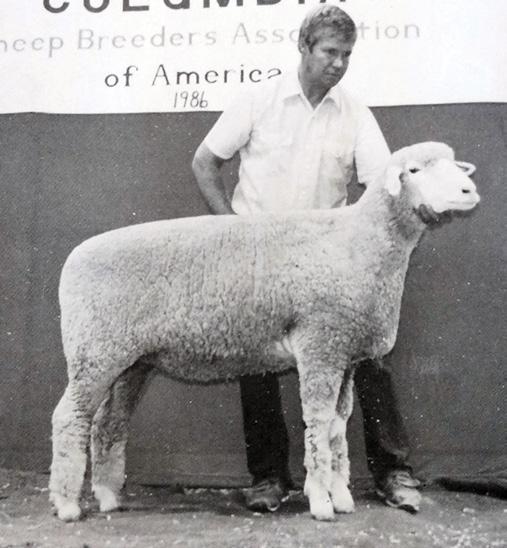
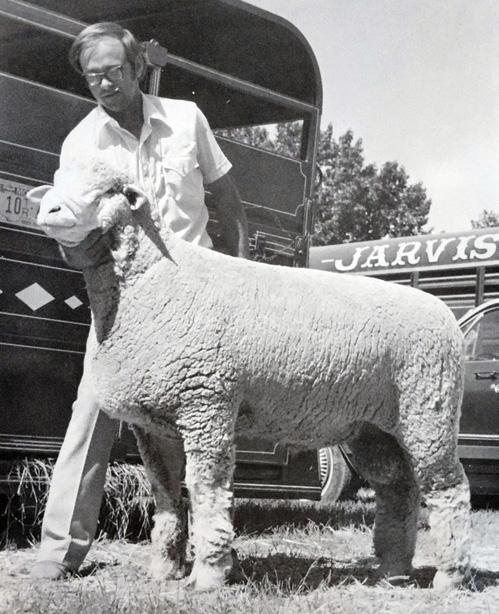
On the 50th Anniversary of the Columbia Sheep Breeders Association in 1991, the Board posed for their annual photo. This was a ritual that Dick made sure was accomplished at Board meetings. At the time, it was, also, historical, that Gwen Bausetti was the first woman to serve as a Board member.
Pictured, left to right, front row: Phyllis and Dick Gerber, OH; Gwen Bassetti, WA; Robert Gucker, OH; second row: Billy Dan Sorrell, TX; Harry Maddux, CA; Gordon Darlinton, MT; Jack Wilson, WI; Steven Kitzan, ND; back row: Gary Braet, IA; Tory Freeburg, WY; David Smith, IN; Lee Jarvis, UT; and LaVoy Ebnet, MN.
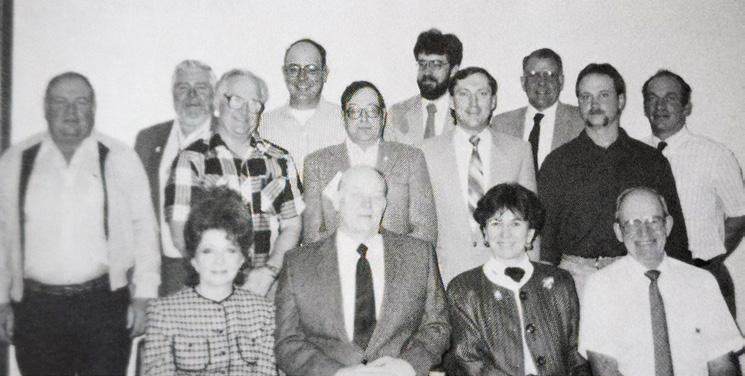
Dick worked with generations of Columbia breeders. He and Phyllis had close relationships with many. Breeders often called to check in with Dick or Dick with them. Dick had his finger on the pulse of the Association which explained his extraordinary ability to guide the membership. Dick and Phyllis were recognized with the “Golden Bell” in 2006. Gold represented their ex- traordinary and unmatched service for 40 years.
Dick Gerber’s final day as the Executive Secretary of the Columbia Sheep Breeders Association of America was December 31st, 2006.
A Tribute to Dick Gerber by Dave Cook, OH
Any tribute written about Dick Gerber will be inadequate. I first showed under him as a teenager. He was a consummate judge. He was a consummate Stockman. He was a consummate Columbia Breeder. He was the consummate Breed Secretary.
Dick’s accident was a tragic event for a strong man with a powerful drive for excellence and a strong force of will. Who knows where his life would have taken him otherwise. We do know it became an intricate part of the history of the Columbia Breed.
After the accident, Dick channeled his professional energy into the Columbia Breed. The Columbia Breed was blessed to have him at the helm for so many years. None of us can truly understand the effort Dick and Phyllis were required to put forth to attend and manage the National Shows throughout the country for years.
I came to the Columbia Breed later into my sheep life. I can appreciate just how good Dick was as a breed secretary. Dick was always supportive. Dick was always a promoter of the breed. He was endlessly at his desk and on the phone. He was ever accommodating of breeder’s needs.
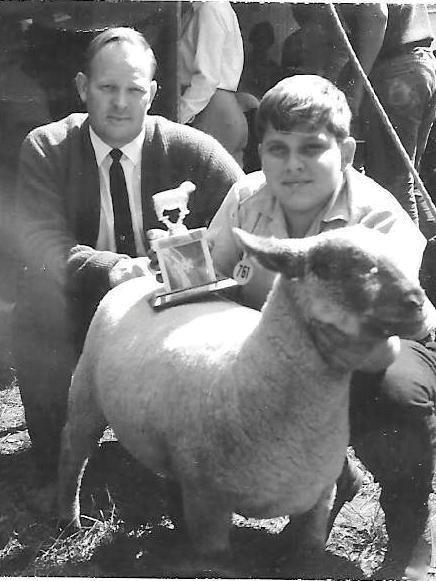
My eulogy may not be the proper time to say this, but I always wished the Columbia Breed had been more gracious to Dick and Phyllis as it tried to move beyond the Dick Gerber era.
I believe the breed can never move beyond the Dick Gerber era because to me he remains the heart and soul of the Columbia Breed.
Written
by
Dave Cook, New London, Ohio








